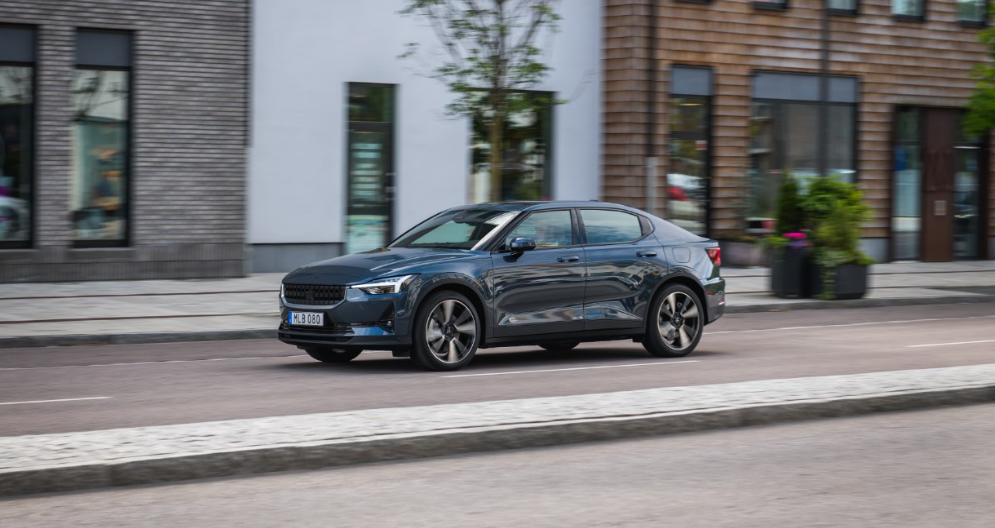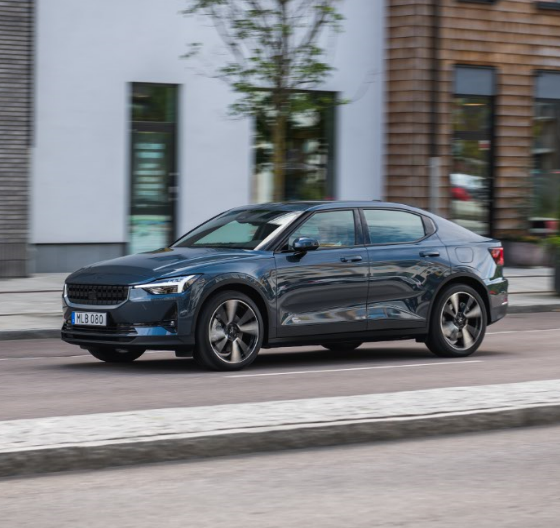Noted carmaker Aston Martin has found itself in a climate lobbying controversy, following the spread of an anti-EV study which peddled the idea that electric cars will have to travel as far as 50,000 miles before matching the carbon footprint of a comparable fossil fuel-powered vehicle. Needless to say, the controversy, which is now being dubbed in EV circles as #Astongate, is crumbling down, and it seems to be dragging Aston Martin’s name with it.
The report, titled “Decarbonising Road Transport: There Is No Silver Bullet,” made the rounds in several key media outlets last week, with agencies such as The Times and the The Daily Telegraph reporting on its alleged findings. The findings of the study promptly drew raised eyebrows from EV authorities online, most especially Auke Hoekstra, Senior Advisor on Electric Mobility at the Eindhoven Technical University, who is known for debunking anti-electric car narratives. It didn’t take long before the study was thoroughly debunked.
But the story only got stranger from there.
Electric vehicle experts and researchers opted to trace the source of the study, and what they found was quite interesting. As it turned out, the study was commissioned by companies including Aston Martin, Bosch, Honda, and McLaren. The study was presented as the work of a firm called Clarendon Communications, and it was commissioned shortly after UK Prime Minister Boris Johnson called for a ban on the sale of new fossil fuel-powered vehicles from 2030.
Interestingly enough, the communications firm behind the report, Clarendon Communications, was registered under the name of Rebecca Stephen, a part-time NHS nurse and the spouse of Aston Martin’s government affairs director, James Stephen. The PR firm was set up only this February, and it is registered to the address of a property jointly owned by the couple.
In an email to The Guardian, Rebecca Stephen stated that the report from Clarendon was “compiled” by the same companies that commissioned the study itself. According to Stephen, Clarendon was contacted by Bosch “to provide public affairs and stakeholder support” so its logo and contact details appear on the back of the report “for this purpose.” Bosch, for its part, noted via a spokeswoman that it fully supports the report. The company also called for “greater transparency” on the carbon footprint of vehicles.
As the “Astongate” controversy emerges, Labour MP Matt Western, who wrote the foreword to the Clarendon Communications report, expressed his disdain that the study was used as part of an anti-EV narrative. According to Western, he agreed to be part of the project to “push this agenda forward, rather than the opposite.” “I am disappointed that the report has since been used to push an anti-electrification line in the media. I was not aware of any link between the PR firm involved and Aston Martin,” he said.
As for Francis Ingham, the director-general of the Public Relations and Communications Association, he noted that PR agencies such as Clarendon must fight misinformation, not spread it. “We have a duty to fight misinformation, not purvey it. PR agencies should be fully transparent about who they represent. Failure to disclose client relationships damages trust in our industry and lends credence to misleading perceptions of PR as a sinister practice,” Ingham said.
Amidst the shift of the auto industry towards electric vehicles, Aston Martin is among those that are being left behind. The company has canceled its RapidE electric vehicle and is currently not promising anything electric until 2026. The company has handed a fifth of its equity to Mercedes-Benz in exchange for access to the German luxury automaker’s hybrid and EV tech.

Elon Musk
Elon Musk’s X will start using a Tesla-like software update strategy
The initiative seems designed to accelerate updates to the social media platform, while maintaining maximum transparency.

Elon Musk’s social media platform X will adopt a Tesla-esque approach to software updates for its algorithm.
The initiative seems designed to accelerate updates to the social media platform, while maintaining maximum transparency.
X’s updates to its updates
As per Musk in a post on X, the social media company will be making a new algorithm to determine what organic and advertising posts are recommended to users. These updates would then be repeated every four weeks.
“We will make the new 𝕏 algorithm, including all code used to determine what organic and advertising posts are recommended to users, open source in 7 days. This will be repeated every 4 weeks, with comprehensive developer notes, to help you understand what changed,” Musk wrote in his post.
The initiative somewhat mirrors Tesla’s over-the-air update model, where vehicle software is regularly refined and pushed to users with detailed release notes. This should allow users to better understand the details of X’s every update and foster a healthy feedback loop for the social media platform.
xAI and X
X, formerly Twitter, has been acquired by Elon Musk’s artificial intelligence startup, xAI last year. Since then, xAI has seen a rapid rise in valuation. Following the company’s the company’s upsized $20 billion Series E funding round, estimates now suggest that xAI is worth tens about $230 to $235 billion. That’s several times larger than Tesla when Elon Musk received his controversial 2018 CEO Performance Award.
As per xAI, the Series E funding round attracted a diverse group of investors, including Valor Equity Partners, Stepstone Group, Fidelity Management & Research Company, Qatar Investment Authority, MGX, and Baron Capital Group, among others. Strategic partners NVIDIA and Cisco Investments also continued support for building the world’s largest GPU clusters.
News
Tesla FSD Supervised wins MotorTrend’s Best Driver Assistance Award
The decision marks a notable reversal for the publication from prior years, with judges citing major real-world improvements that pushed Tesla’s latest FSD software ahead of every competing ADAS system.

Tesla’s Full Self-Driving (Supervised) system has been named the best driver-assistance technology on the market, earning top honors at the 2026 MotorTrend Best Tech Awards.
The decision marks a notable reversal for the publication from prior years, with judges citing major real-world improvements that pushed Tesla’s latest FSD software ahead of every competing ADAS system. And it wasn’t even close.
MotorTrend reverses course
MotorTrend awarded Tesla FSD (Supervised) its 2026 Best Tech Driver Assistance title after extensive testing of the latest v14 software. The publication acknowledged that it had previously criticized earlier versions of FSD for erratic behavior and near-miss incidents, ultimately favoring rivals such as GM’s Super Cruise in earlier evaluations.
According to MotorTrend, the newest iteration of FSD resolved many of those shortcomings. Testers said v14 showed far smoother behavior in complex urban scenarios, including unprotected left turns, traffic circles, emergency vehicles, and dense city streets. While the system still requires constant driver supervision, judges concluded that no other advanced driver-assistance system currently matches its breadth of capability.
Unlike rival systems that rely on combinations of cameras, radar, lidar, and mapped highways, Tesla’s FSD operates using a camera-only approach and is capable of driving on city streets, rural roads, and freeways. MotorTrend stated that pure utility, the ability to handle nearly all road types, ultimately separated FSD from competitors like Ford BlueCruise, GM Super Cruise, and BMW’s Highway Assistant.
High cost and high capability
MotorTrend also addressed FSD’s pricing, which remains significantly higher than rival systems. Tesla currently charges $8,000 for a one-time purchase or $99 per month for a subscription, compared with far lower upfront and subscription costs from other automakers. The publication noted that the premium is justified given FSD’s unmatched scope and continuous software evolution.
Safety remained a central focus of the evaluation. While testers reported collision-free operation over thousands of miles, they noted ongoing concerns around FSD’s configurable driving modes, including options that allow aggressive driving and speeds beyond posted limits. MotorTrend emphasized that, like all Level 2 systems, FSD still depends on a fully attentive human driver at all times.
Despite those caveats, the publication concluded that Tesla’s rapid software progress fundamentally reshaped the competitive landscape. For drivers seeking the most capable hands-on driver-assistance system available today, MotorTrend concluded Tesla FSD (Supervised) now stands alone at the top.
News
Elon Musk’s Grokipedia surges to 5.6M articles, almost 79% of English Wikipedia
The explosive growth marks a major milestone for the AI-powered online encyclopedia, which was launched by Elon Musk’s xAI just months ago.

Elon Musk’s Grokipedia has grown to an impressive 5,615,201 articles as of today, closing in on 79% of the English Wikipedia’s current total of 7,119,376 articles.
The explosive growth marks a major milestone for the AI-powered online encyclopedia, which was launched by Elon Musk’s xAI just months ago. Needless to say, it would only be a matter of time before Grokipedia exceeds English Wikipedia in sheer volume.
Grokipedia’s rapid growth
xAI’s vision for Grokipedia emphasizes neutrality, while Grok’s reasoning capabilities allow for fast drafting and fact-checking. When Elon Musk announced the initiative in late September 2025, he noted that Grokipedia would be an improvement to Wikipedia because it would be designed to avoid bias.
At the time, Musk noted that Grokipedia “is a necessary step towards the xAI goal of understanding the Universe.”
Grokipedia was launched in late October, and while xAI was careful to list it only as Version 0.1 at the time, the online encyclopedia immediately earned praise. Wikipedia co-founder Larry Sanger highlighted the project’s innovative approach, noting how it leverages AI to fill knowledge gaps and enable rapid updates. Netizens also observed how Grokipedia tends to present articles in a more objective manner compared to Wikipedia, which is edited by humans.
Elon Musk’s ambitious plans
With 5,615,201 total articles, Grokipedia has now grown to almost 79% of English Wikipedia’s article base. This is incredibly quick, though Grokipedia remains text-only for now. xAI, for its part, has now updated the online encyclopedia’s iteration to v0.2.
Elon Musk has shared bold ideas for Grokipedia, including sending a record of the entire knowledge base to space as part of xAI’s mission to preserve and expand human understanding. At some point, Musk stated that Grokipedia will be renamed to Encyclopedia Galactica, and it will be sent to the cosmos.
“When Grokipedia is good enough (long way to go), we will change the name to Encyclopedia Galactica. It will be an open source distillation of all knowledge, including audio, images and video. Join xAI to help build the sci-fi version of the Library of Alexandria!” Musk wrote, adding in a later post that “Copies will be etched in stone and sent to the Moon, Mars and beyond. This time, it will not be lost.”










